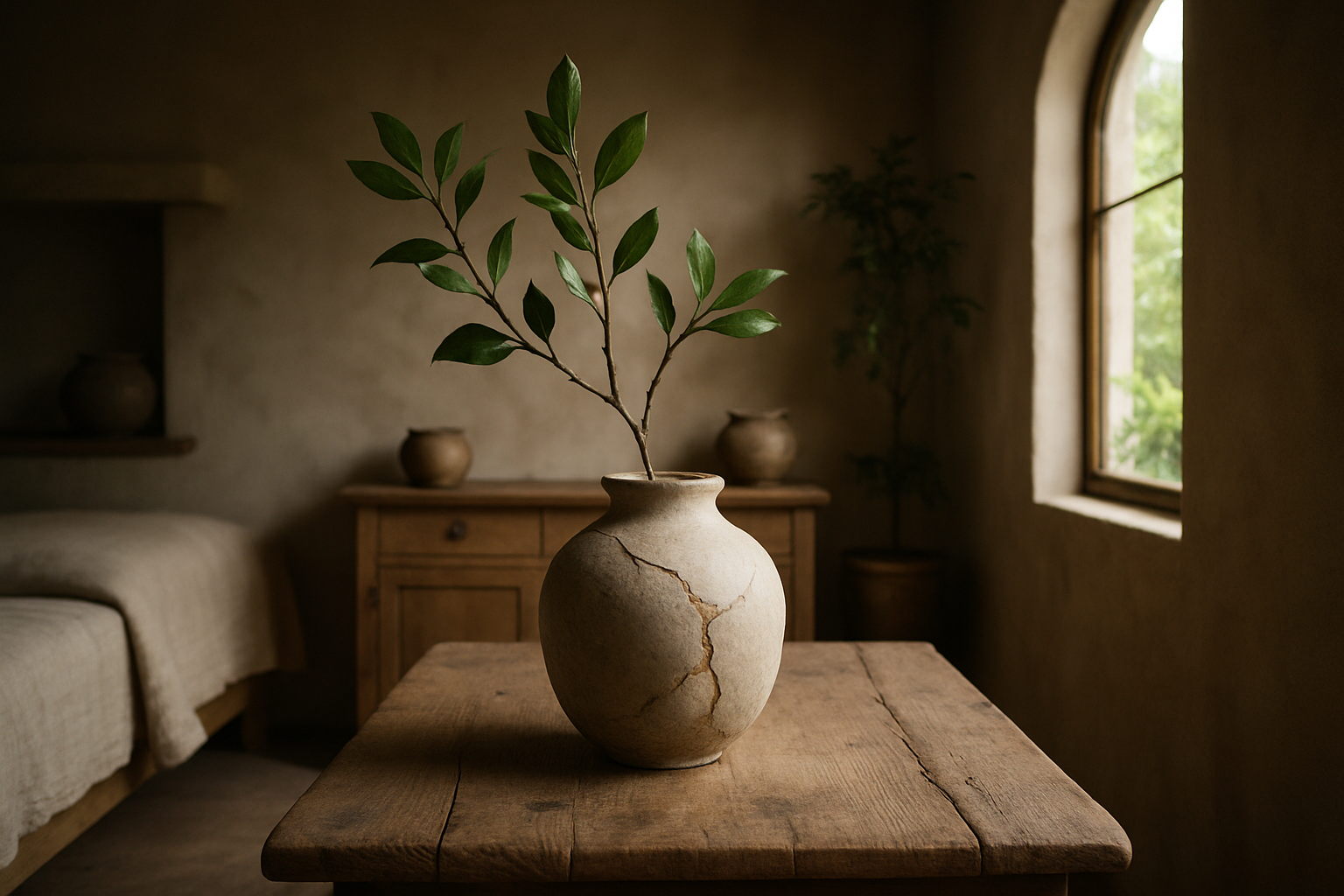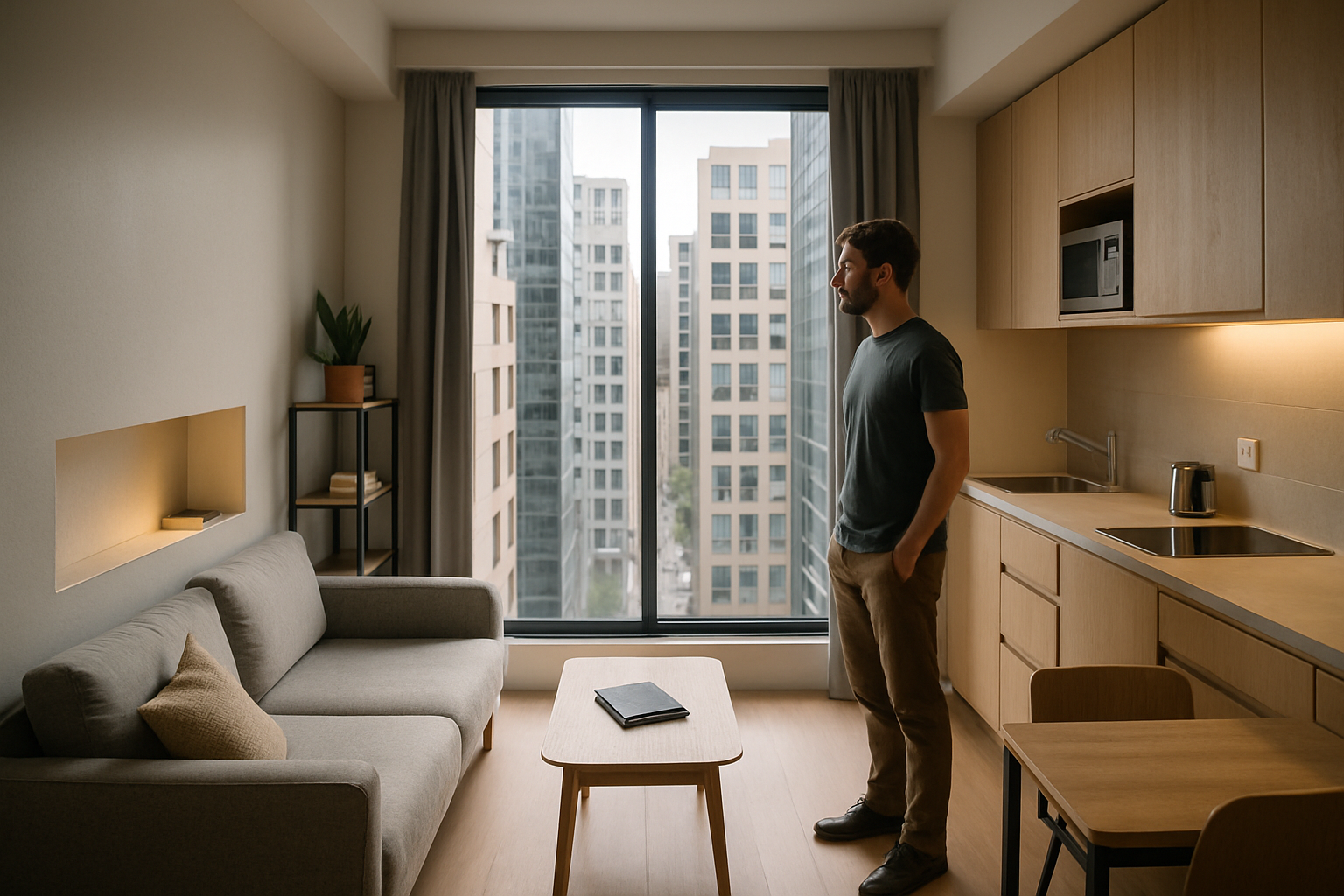Wabi-Sabi: Embracing Imperfection in Modern Home Design
The gentle art of finding beauty in imperfection and profundity in earthiness, wabi-sabi is a cornerstone of Japanese aesthetics. This ancient philosophy is now making waves in modern home design, offering a refreshing counterpoint to the pursuit of perfection that often dominates interior trends. As we explore the nuances of wabi-sabi, we'll discover how this timeless approach can transform living spaces into havens of tranquility and authenticity.

Origins and Philosophy of Wabi-Sabi
Wabi-sabi finds its roots in 15th century Japanese tea ceremonies, where simplicity and rustic elegance were prized over ostentatious displays. The term combines two concepts: wabi, referring to the beauty of humble simplicity, and sabi, which appreciates the passage of time and weathering. Together, they form a worldview that finds beauty in the flawed and fleeting nature of existence.
In home design, wabi-sabi translates to an aesthetic that values natural materials, muted colors, and irregular shapes. It’s about creating spaces that feel lived-in and authentic, rather than sterile and perfect. This philosophy encourages homeowners to embrace the patina of age, the uniqueness of handcrafted items, and the subtle imperfections that make a house a home.
Key Elements of Wabi-Sabi Design
To incorporate wabi-sabi into your home, focus on these key elements:
-
Natural Materials: Opt for raw, unfinished wood, stone, and clay. These materials age beautifully, developing character over time.
-
Muted Color Palette: Choose earthy tones and soft, subdued colors that evoke a sense of calm and connection to nature.
-
Handcrafted Items: Incorporate pieces made by artisans, which often feature slight irregularities that add charm and uniqueness.
-
Asymmetry: Embrace uneven arrangements and organic shapes to create visual interest and a sense of naturalness.
-
Minimalism: Keep spaces uncluttered, focusing on a few carefully chosen pieces that hold personal meaning.
Implementing Wabi-Sabi in Different Rooms
Each room in your home offers unique opportunities to embrace wabi-sabi principles:
Living Room: Create a cozy, inviting atmosphere with a mix of textures. A worn leather armchair, a handwoven throw, and a reclaimed wood coffee table can set the tone. Display collections of found objects or family heirlooms to add personal history to the space.
Kitchen: Opt for open shelving to display mismatched dishes and handmade pottery. Choose countertops with natural variations, like butcher block or stone with visible veining. Embrace the wear and tear that comes with a well-used kitchen.
Bedroom: Keep the space serene with natural linens in muted tones. A weathered wooden headboard or a vintage quilt can add character without overwhelming the senses. Avoid perfect symmetry in your bedside tables or lamps to maintain a relaxed feel.
Bathroom: Incorporate natural elements like a stone sink or a wooden stool. Choose fixtures with a patina or aged finish. Add warmth with textured towels and a handmade bath mat.
The Art of Kintsugi in Home Decor
Kintsugi, the Japanese art of repairing broken pottery with gold, is a beautiful embodiment of wabi-sabi principles. This technique not only gives new life to broken items but also celebrates their history and imperfections. In home decor, kintsugi-inspired pieces can serve as striking focal points, reminding us of the beauty in resilience and repair.
Consider displaying a kintsugi bowl as a centerpiece or incorporating the technique into a broken tile floor or countertop. These elements add a touch of unexpected elegance while honoring the wabi-sabi ethos.
Cultivating a Wabi-Sabi Garden
The principles of wabi-sabi extend beautifully to outdoor spaces. A wabi-sabi garden eschews manicured lawns and perfect hedges in favor of a more natural, slightly wild aesthetic. Here’s how to bring this philosophy to your garden:
-
Choose native plants that thrive with minimal intervention.
-
Allow plants to grow in their natural forms, avoiding excessive pruning.
-
Incorporate weathered stones, aged wood, and rusted metal elements.
-
Create meandering paths rather than straight lines.
-
Embrace the changing seasons and the beauty of decay in fallen leaves and faded blooms.
The Psychological Benefits of Wabi-Sabi Interiors
Adopting wabi-sabi in home design isn’t just about aesthetics; it can have profound psychological benefits. In a world that often demands perfection, wabi-sabi interiors offer a respite, encouraging us to find peace in imperfection and mindfulness in the present moment.
Research suggests that environments that embody wabi-sabi principles can reduce stress, promote relaxation, and foster a greater sense of well-being. By surrounding ourselves with natural materials and objects that bear the marks of time, we create spaces that feel authentic and grounding.
Balancing Wabi-Sabi with Modern Living
While wabi-sabi emphasizes a return to simplicity and natural imperfection, it doesn’t mean rejecting all modern conveniences. The key is to find a harmonious balance between the old and the new, the imperfect and the functional.
For example, a sleek smart home system can coexist with weathered wooden beams and handmade textiles. The goal is to create a space that feels both timeless and relevant, where cutting-edge technology doesn’t overshadow the soulful elements that make a house a home.
Sourcing Wabi-Sabi-Inspired Pieces
To truly embrace wabi-sabi, look beyond mass-produced items. Seek out local artisans, vintage shops, and even nature itself for unique pieces:
-
Visit craft fairs and pottery studios for one-of-a-kind ceramics.
-
Explore antique stores for furniture with patina and character.
-
Collect natural objects like driftwood, stones, or dried flowers on your travels.
-
Commission custom pieces from local woodworkers or metalworkers.
-
Learn simple crafts like weaving or pottery to create your own wabi-sabi elements.
By thoughtfully curating your space with items that have history, imperfections, and personal meaning, you create a home that is uniquely yours and deeply aligned with wabi-sabi principles.
In embracing wabi-sabi, we open ourselves to a new way of seeing beauty in our homes and in our lives. It’s an invitation to slow down, appreciate the subtle and the imperfect, and find peace in the ever-changing nature of our surroundings. As we cultivate spaces that honor the passage of time and the beauty of natural imperfection, we create homes that are not just visually appealing, but deeply nurturing to the soul.





